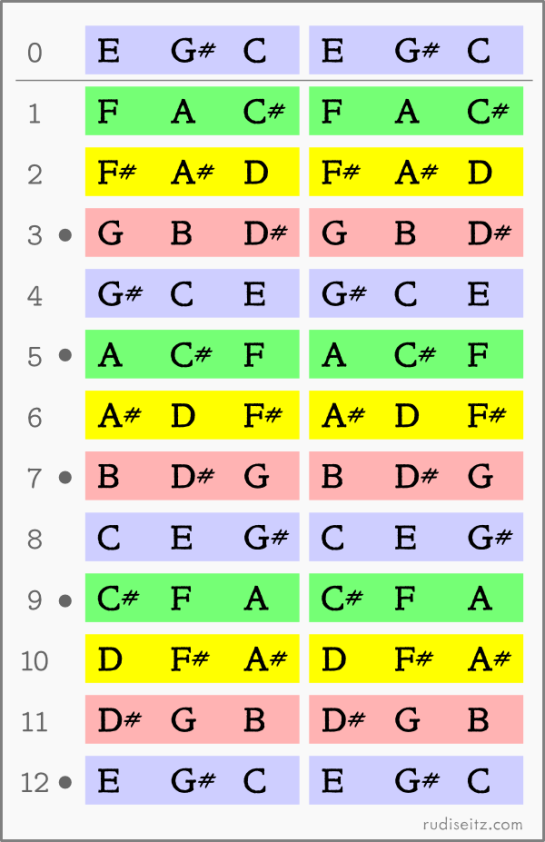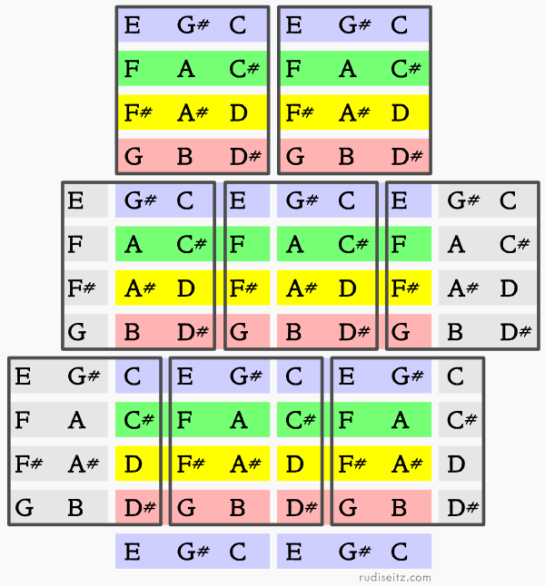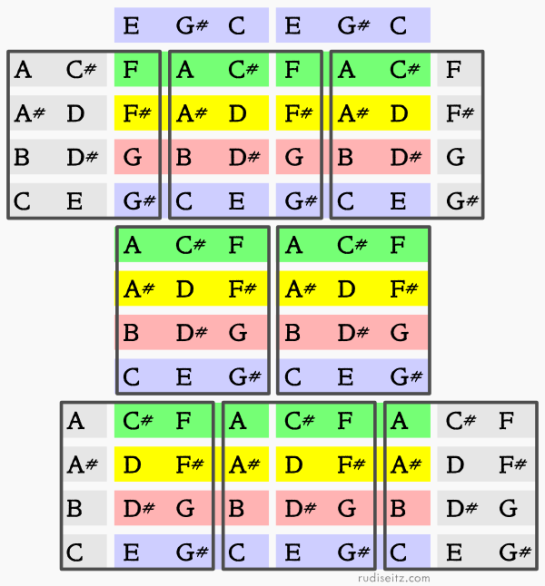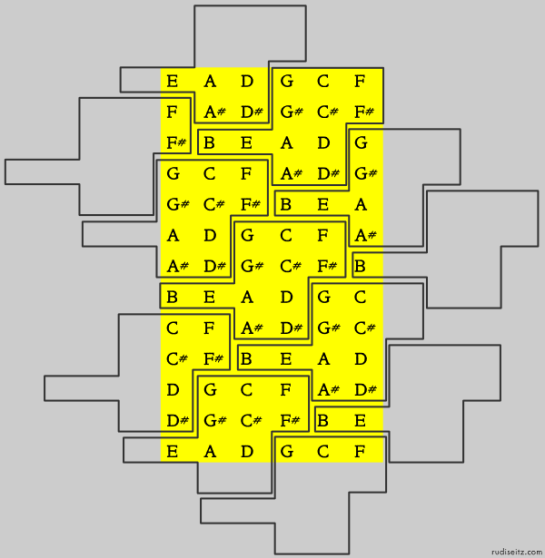This diagram shows the fretboard layout for a 6-string guitar in All Major Thirds tuning, assuming the open strings are tuned to E, G#, C, E, G#, C as recommended by Ralph Patt. I made the diagram because I’m beginning to learn this nonstandard tuning and I wanted a study aid that emphasized the amazing regularity of the system.
Notice that because the three open bass strings are tuned the same as the three open treble strings (modulo an octave), the entire pattern of notes among the bass strings is repeated among the trebles – the left and right halves of the diagram are identical.
Each of the four colors used in the diagram indicates one of four possible augmented triads (modulo inversion and enharmonic respelling). Notice, for example, that two copies the F Augmented triad (F A C♯) occur along the first fret and are shown with a light green background. At the fifth fret the same set of notes occurs in a different inversion – now the notes are ordered A C♯ F; again they are shown with a light green background. Finally, at the ninth fret, the notes occur in the order C♯ F A.
The “fret dots” on the left are positioned according to most common inlay pattern for standard tuning. For simplicity, notes are always spelled using sharps instead of flats, though of course all the notes in the diagram could be written in multiple ways.
 An intriguing property of this layout is that any block of notes spanning three strings and four frets can be considered as a “tile” that repeats across the entire fretboard, in a way where the tiles don’t overlap and also don’t leave any gaps. In the image directly below, I started by drawing a box around the notes across the bass strings at frets zero through three; next, I placed boxes around all other instances of that same pattern. (The notes with a gray background aren’t actually on the fretboard, of course – I included them to make the pattern clear.)
An intriguing property of this layout is that any block of notes spanning three strings and four frets can be considered as a “tile” that repeats across the entire fretboard, in a way where the tiles don’t overlap and also don’t leave any gaps. In the image directly below, I started by drawing a box around the notes across the bass strings at frets zero through three; next, I placed boxes around all other instances of that same pattern. (The notes with a gray background aren’t actually on the fretboard, of course – I included them to make the pattern clear.)
This next diagram is similar to the previous one, except I outlined a different block of notes:
Other regular tunings like All Fourths also give rise to tiling patterns like the ones above, but in the case of All Fourths, non-overlapping tiles won’t form nice, simple rectangles, and it’s not possible to “fit” as many complete tiles on the fretboard. Here’s one way of tiling a fretboard tuned to E, A, D, G, C, F:


